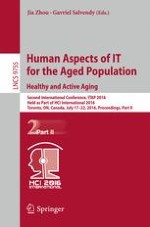2016 | OriginalPaper | Buchkapitel
Transportation Accessibility Assessment of Critical Emergency Facilities: Aging Population-Focused Case Studies in Florida
verfasst von : Ayberk Kocatepe, Eren Erman Ozguven, Hidayet Ozel, Mark W. Horner, Ren Moses
Erschienen in: Human Aspects of IT for the Aged Population. Healthy and Active Aging
Aktivieren Sie unsere intelligente Suche, um passende Fachinhalte oder Patente zu finden.
Wählen Sie Textabschnitte aus um mit Künstlicher Intelligenz passenden Patente zu finden. powered by
Markieren Sie Textabschnitte, um KI-gestützt weitere passende Inhalte zu finden. powered by
